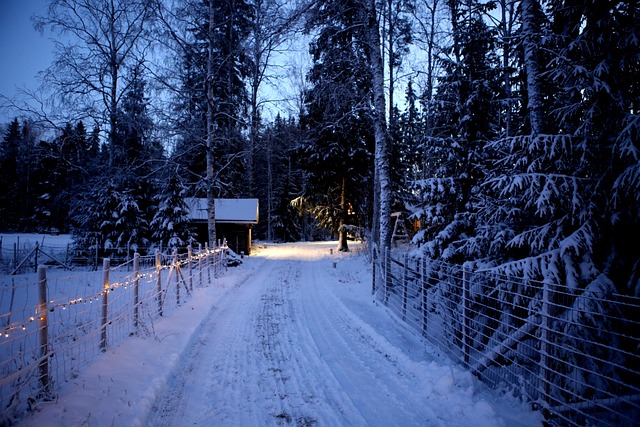In the pursuit of sustainable living, New Bedford, MA, is exploring eco-friendly fencing materials as a step towards reducing environmental impact. This article delves into the diverse options available, highlighting their numerous benefits for both homes and local ecosystems. From natural, long-lasting materials to installation tips, we guide readers through the process of transitioning to green fencing. Additionally, real-world case studies showcase successful projects, inspiring local residents to embrace sustainable solutions.
- Understanding Eco-Friendly Fencing Options
- Benefits of Sustainable Fencing in New Bedford
- Natural Materials for Long-Lasting Fences
- How Green Fencing Enhances Local Ecosystems
- Installation and Maintenance Tips for Eco-Fencing
- Case Studies: Successful Eco-Fencing Projects
Understanding Eco-Friendly Fencing Options
In today’s environmentally conscious world, homeowners and landscape professionals in New Bedford, MA, are increasingly seeking eco-friendly fencing options. These materials offer both aesthetic appeal and significant environmental benefits. Understanding what constitutes an “eco-friendly” fence starts with recognizing the diverse range of sustainable materials available. From recycled plastic to organic wood and even bamboo, each option has its unique properties, advantages, and drawbacks.
Choosing these alternatives not only reduces the carbon footprint associated with traditional fencing but also supports a circular economy by repurposing or renewably sourcing materials. For instance, recycled plastic fences are durable and low-maintenance, while organic woods, though requiring more upkeep, contribute to local ecosystems by being made from sustainably harvested timber.
Benefits of Sustainable Fencing in New Bedford
New Bedford, MA residents now have an eco-conscious option when it comes to fencing their properties. Sustainable fencing materials offer a range of benefits that extend beyond aesthetics. By choosing environmentally friendly options, homeowners contribute to local biodiversity and ecosystem health. For instance, using native plant-based fences can provide habitats for birds and insects, promoting biodiversity in urban areas.
Additionally, these green alternatives often have longer lifespans than traditional fencing, reducing waste and the environmental impact of frequent replacements. They are also resistant to rot and decay, eliminating the need for toxic preservatives. This not only cuts down on pollution but also saves residents money in the long run. Sustainable fencing is a win-win solution that benefits both the environment and property owners in New Bedford.
Natural Materials for Long-Lasting Fences
In New Bedford, MA, opting for eco-friendly fencing materials is not just a trend but a conscious choice that offers both environmental and aesthetic benefits. Natural materials like wood, bamboo, and hemp are gaining popularity due to their durability and low environmental impact. These materials are renewable resources that can withstand the test of time, making them an excellent alternative to traditional synthetic fences.
Unlike synthetic options that often leach chemicals and contribute to pollution, natural fencing materials break down naturally over time, reducing waste in landfills. For instance, wood fences can last for decades with proper care, while bamboo, known for its rapid growth rate, provides a sustainable option with exceptional strength. This long-lasting quality not only saves homeowners from frequent replacements but also minimizes the need for extensive maintenance, contributing to both cost and environmental savings.
How Green Fencing Enhances Local Ecosystems
In New Bedford, MA, opting for green fencing materials isn’t just an aesthetic choice; it significantly contributes to enhancing local ecosystems. Plants like native shrubs and trees that serve as fence material provide habitats and food sources for birds, butterflies, and other wildlife, fostering biodiversity right in one’s backyard. These living fences also help mitigate soil erosion, improve air quality by absorbing pollutants, and reduce the urban heat island effect, creating a cooler, more sustainable microclimate.
Moreover, green fencing materials blend seamlessly with natural landscapes, reducing the ‘hard’ scapes typically associated with traditional fencing. This integration promotes a more harmonious relationship between human habitats and the environment, encouraging a sense of connection with nature. By choosing eco-friendly fencing options, New Bedford residents can make a positive impact on their local ecosystem while enjoying the beauty and benefits that come with living in a greener, healthier community.
Installation and Maintenance Tips for Eco-Fencing
When installing eco-friendly fencing, proper preparation is key to ensuring longevity and aesthetic appeal. Start by clearing the area, removing any weeds or existing debris. Then, carefully measure the perimeter to be fenced, ensuring accurate cuts for posts and panels. Dig holes for the posts, following manufacturer guidelines for depth and spacing. Insert the posts, fill the holes with concrete, and allow it to set completely before attaching the fencing panels. Regular cleaning and inspections are crucial for maintenance. Use gentle cleaners and avoid harsh chemicals to protect the material’s integrity. Inspect the fence periodically for any signs of damage or wear, replacing sections as needed. Keep the fence line free from debris and overgrowth to maintain its clean, natural look.
Case Studies: Successful Eco-Fencing Projects
In New Bedford, MA, several case studies highlight the successful implementation of eco-friendly fencing materials. One notable project involved a local school district that replaced traditional vinyl fences with recycled plastic ones. This initiative not only reduced the school’s carbon footprint but also provided a safer, non-toxic environment for students and staff. The new fencing was designed to mimic natural aesthetics, seamlessly blending into the surrounding landscape.
Another successful instance is a residential neighborhood that opted for living fences made from native plants. This approach not only enhanced biodiversity but also reduced maintenance costs over time. The community-led initiative involved local gardeners and ecologists, resulting in a vibrant green space that encourages wildlife habitat and provides residents with a unique, sustainable solution to traditional fencing. These projects demonstrate the feasibility and benefits of eco-friendly fencing options, setting a precedent for other communities in New Bedford and beyond.
